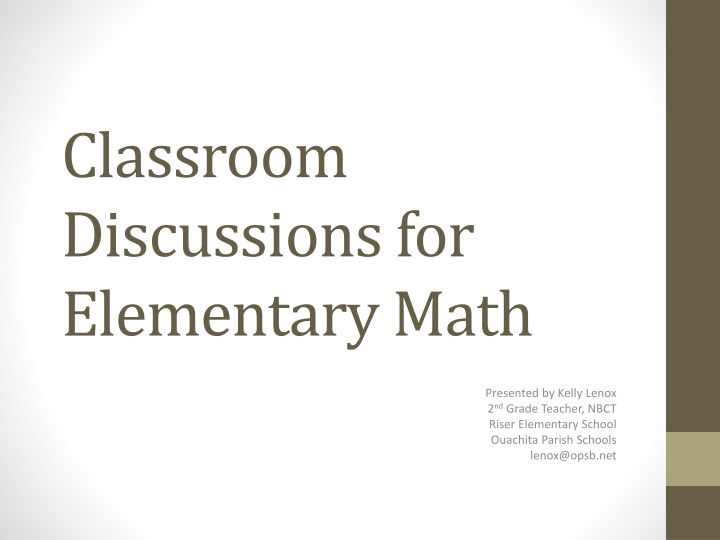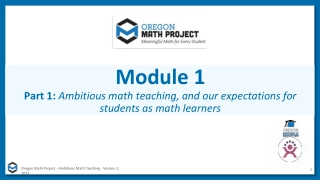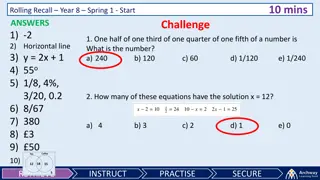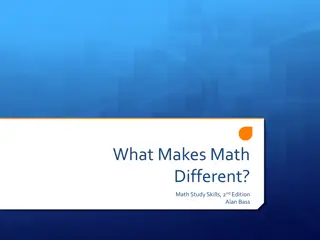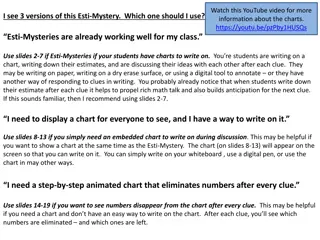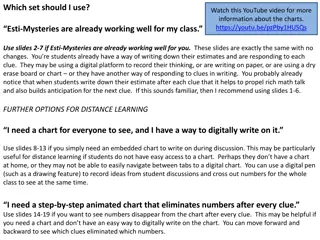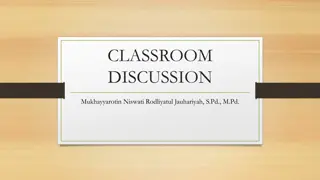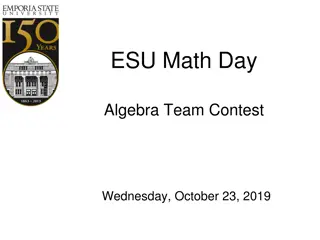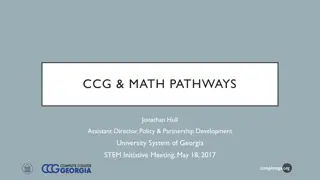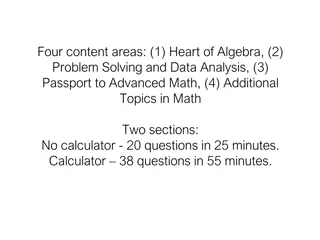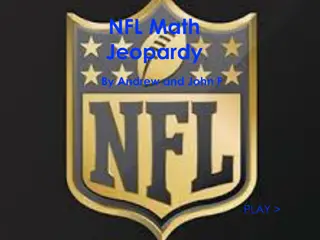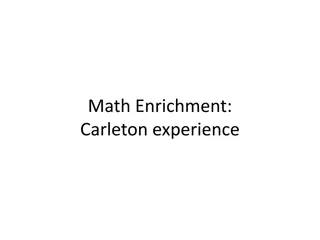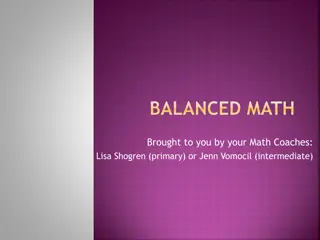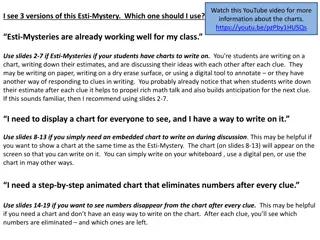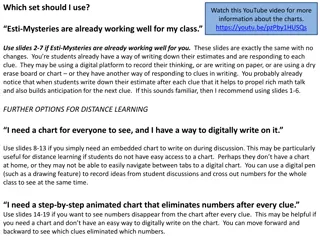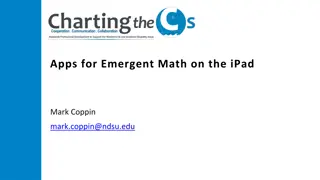Enhancing Math Learning with Classroom Discussions
Utilizing classroom discussions in elementary math helps students clarify their thinking, spot misunderstandings, and connect new concepts to prior knowledge. The article emphasizes the importance of talk moves and productive talk formats such as whole-class, small-group, and partner discussions to foster student engagement and learning in mathematics.
Download Presentation

Please find below an Image/Link to download the presentation.
The content on the website is provided AS IS for your information and personal use only. It may not be sold, licensed, or shared on other websites without obtaining consent from the author.If you encounter any issues during the download, it is possible that the publisher has removed the file from their server.
You are allowed to download the files provided on this website for personal or commercial use, subject to the condition that they are used lawfully. All files are the property of their respective owners.
The content on the website is provided AS IS for your information and personal use only. It may not be sold, licensed, or shared on other websites without obtaining consent from the author.
E N D
Presentation Transcript
Classroom Discussions for Elementary Math Presented by Kelly Lenox 2ndGrade Teacher, NBCT Riser Elementary School Ouachita Parish Schools lenox@opsb.net
Classroom Discussions: Using MATH TALK to Help Students Learn By Suzanne H. Chapin, Catherine O Connor, and Nancy Canavan Anderson
Talk in the Mathematics Class The mathematical thinking of many students is aided by hearing what their peers are thinking. Putting thoughts into words pushes students to clarify their thinking. Teachers can spot student misunderstanding much more easily when they are revealed by a discussion instead of remaining unspoken.
Five Productive Talk Moves Revoicing. Asking students to restate someone else s reasoning. Can you repeat what he just said in your own words? Asking students to apply their own reasoning to someone else s reasoning. Do you agree or disagree and why? Prompting students for further participation. Would you like to add on? Using wait time. Take you time .we ll wait So what you re saying is that it s an odd number?
Three Productive Talk Formats 1. Whole-Class Discussion The teacher is not delivering information, but rather attempting to get students to share their thinking, explain the steps in their reasoning, and build on another s contributions. The teacher refrains from providing the correct answer and does not reject incorrect reasoning, but instead attempts to get students to explore the steps in their reasoning with the aim that they will gain practice in discovering where their thinking falls short. Students learn by processing information, applying reasoning, hearing ideas from others, and connecting new thinking to what they already know, all for the goal of making sense for themselves of new concepts and skills.
Three Productive Talk Formats 2. Small-Group Discussion The teacher gives students a question to discuss in groups of 3 to 6. The teacher circulates as groups discuss and doesn t control the discussions, but observes and interjects. 3. Partner Talk The teacher asks a question and gives students one or two minutes to put their thoughts into words with their nearest neighbor. The students who are hesitant about voicing their thoughts to a whole class will have a chance to practice their contribution with just on person. Students who have not understood completely can bring up their questions with their partner.
What Talk Moves and Talk Formats Can You Spot?
Ground Rules for Respectful Talk and Equitable Participation Every student is listening to what other say Every student can hear what others say Every student may participate by speaking out at some point Set ground rules for your class! Respect and courtesy are mandatory. If students are fearful that they will be mocked, they will not speak.
Principles of Productive Talk Establish and maintain a respectful, supportive environment. Focus talk on mathematics. Provide for equitable participation in classroom talk. Explain your expectations about new forms of talk. Try one challenging new thing at a time.
What Does Productive Talk Look Like? Pay attention to how many times you hear the teacher speak in this video.
What Do We Talk About? Mathematical Concepts Computational Procedures Problem-Solving Strategies Mathematical Reasoning Mathematical Terminology, Symbols, and Definitions Forms of Representation
First Steps Practicing two talk moves on your own. Introducing students to talk-centered instruction. Beginning with a whole-class discussion. Revoicing in small-group discussion. Using partner talk. Building and supporting an argument.
Evaluating Your Progress Did you establish and maintain a respectful, supportive environment? Did you focus the talk on mathematics? Did you provide for equitable participation in classroom talk? Did you explain your expectations about new forms of talk? Did you try one challenging new thing at a time?
Planning Lessons Identifying the mathematical goals. Anticipating confusion. Asking questions. Managing classroom talk. Planning the implementation.
Troubleshooting My students won t talk! The same few students do all the talking! Should I call on students who do not volunteer? My students will talk, but they won t listen! Huh? Responding to incomprehensible contributions. Brilliant, but did anyone understand? I have students at different levels. What should I do when they re wrong? This discussion is not going anywhere. Their answers are so superficial! What if the first speaker gives the right answer? What should I do for English language learners?
Your turn! Choose one person at your table to be the teacher . Using the assignment on your handout, the teacher should use the five talk moves we ve learned about to facilitate a classroom discussion . If time allows, choose a new teacher and repeat the exercise.
3-2-1.. Turn and discuss with your nearest neighbor: 3things you learned today 2things you are excited to learn more about .. 1thing you still have a question about ..
